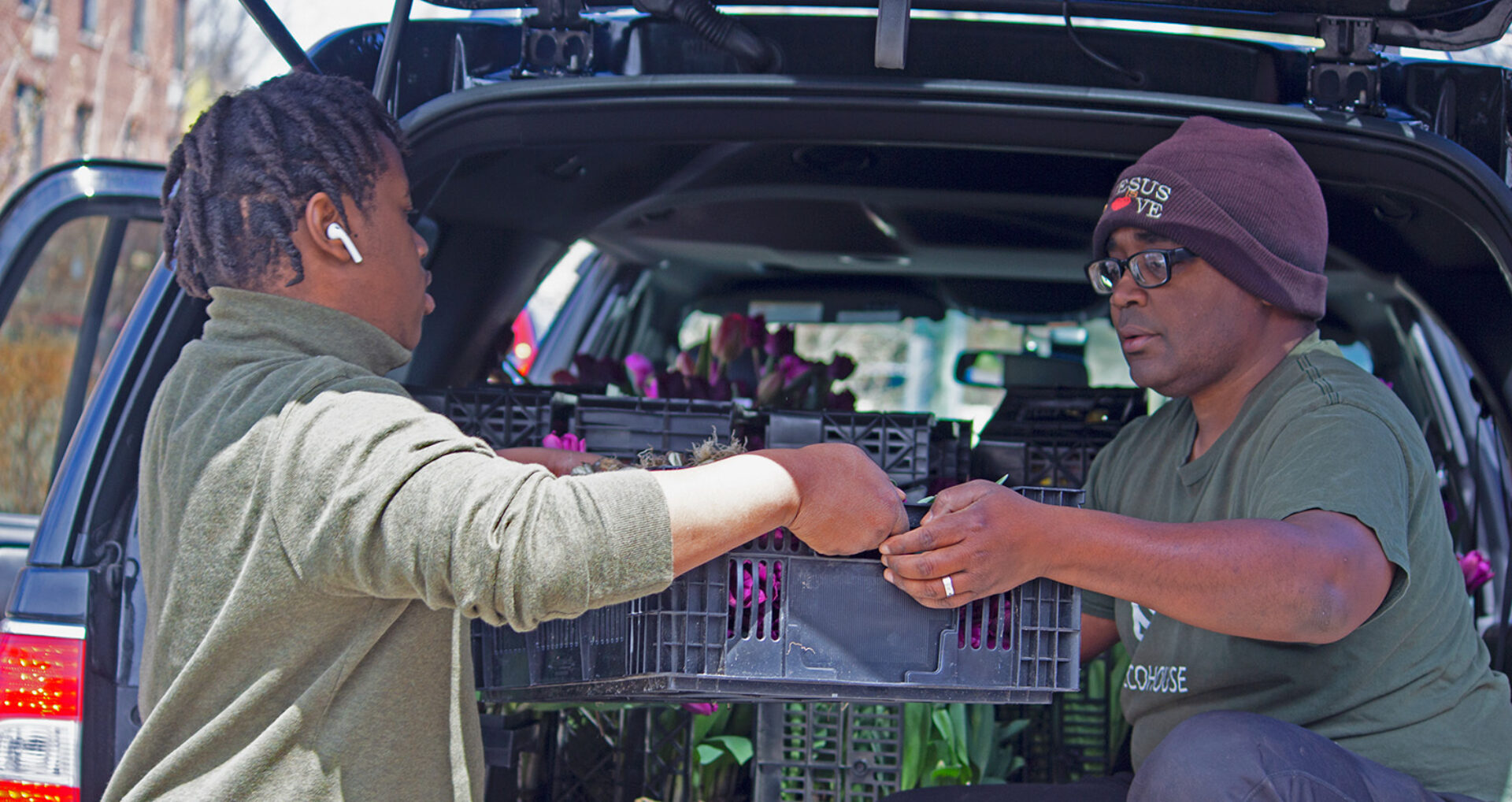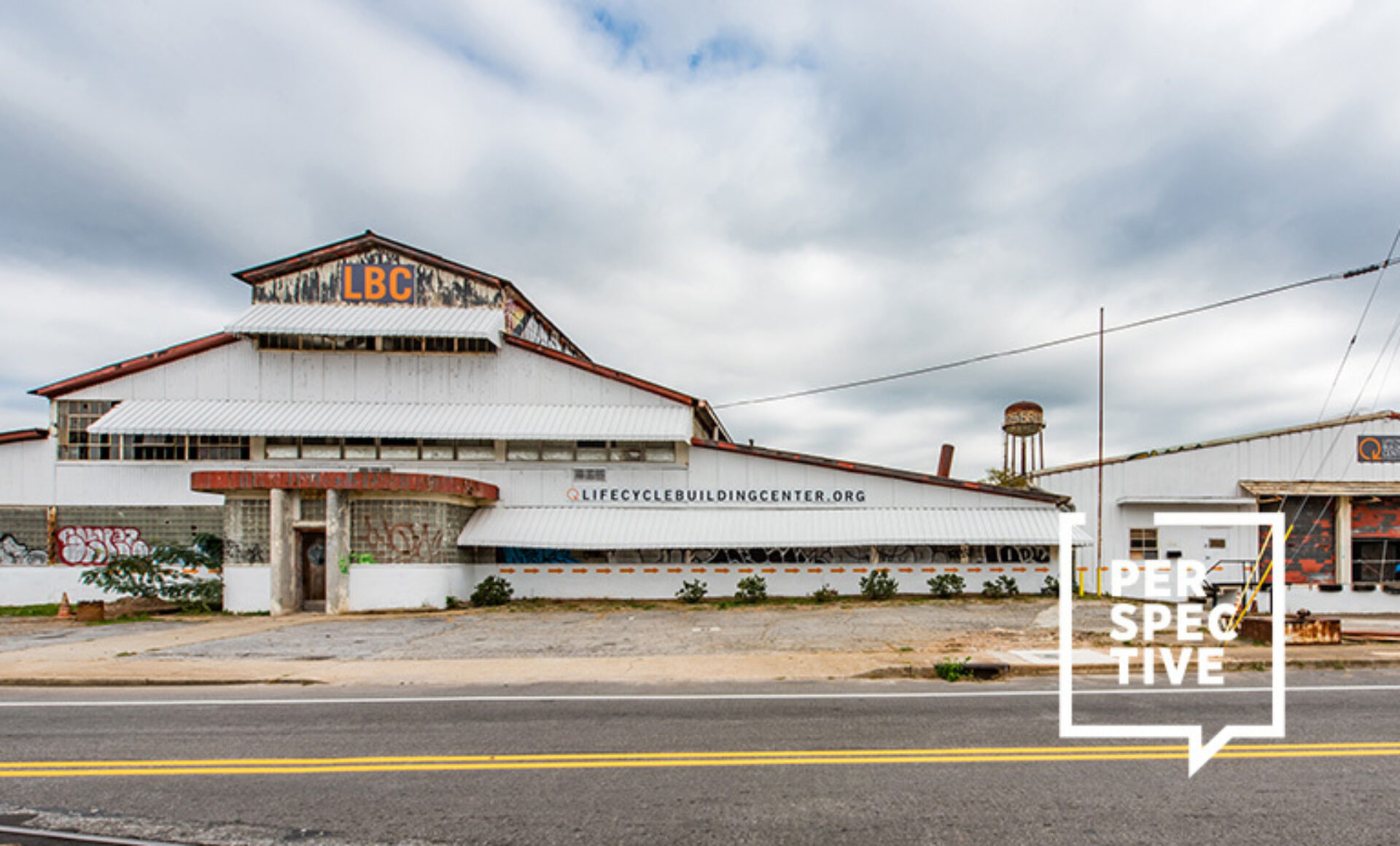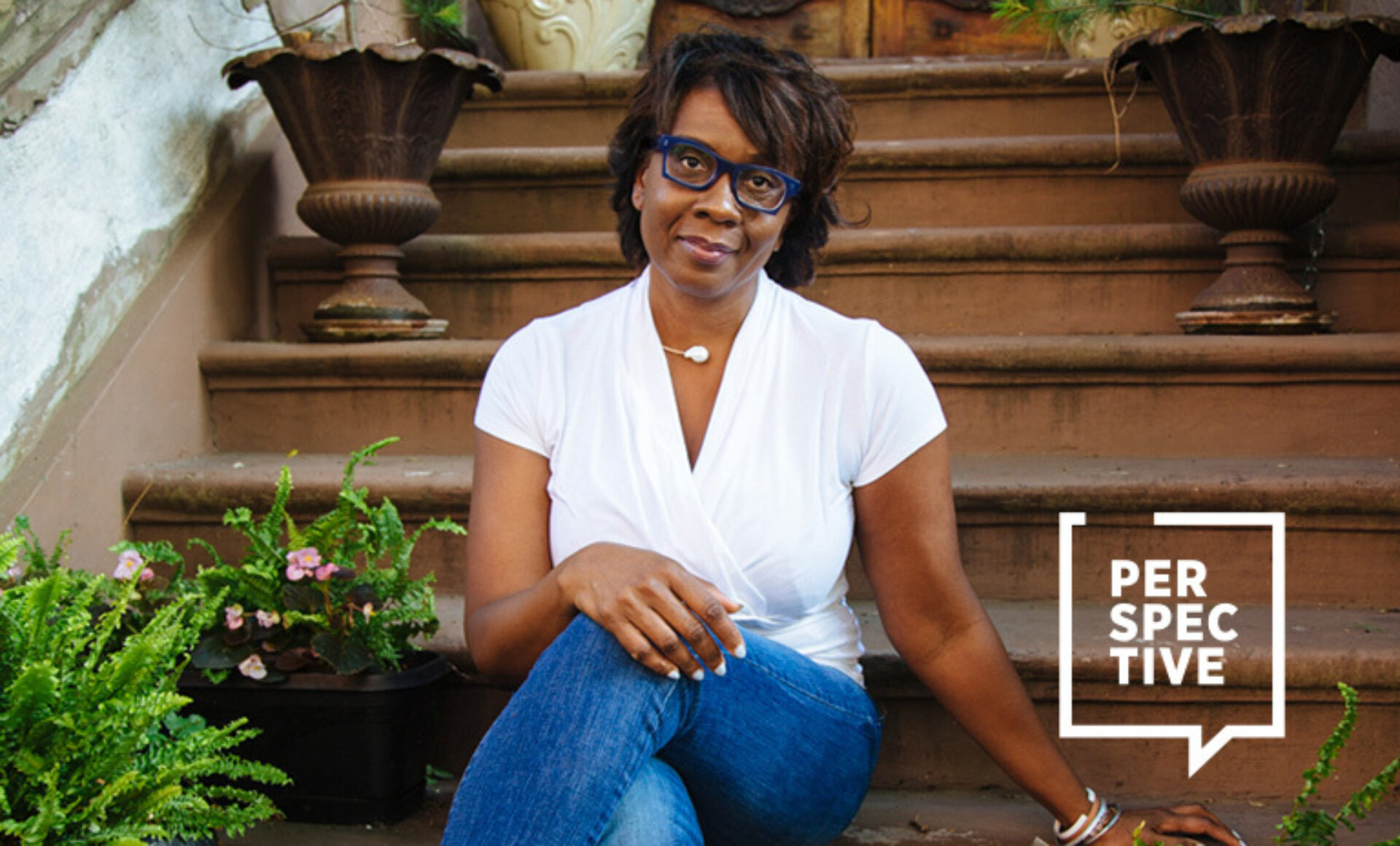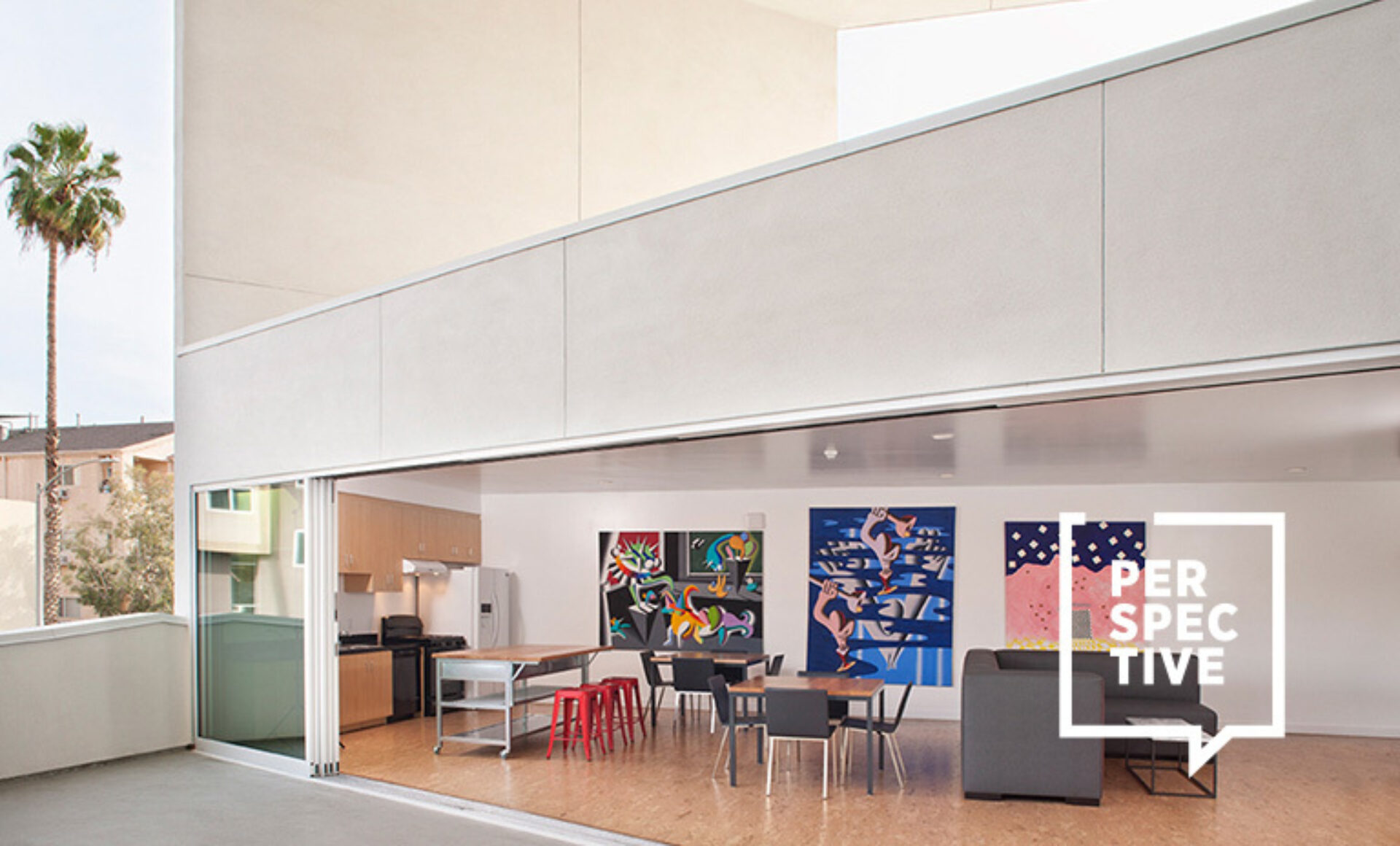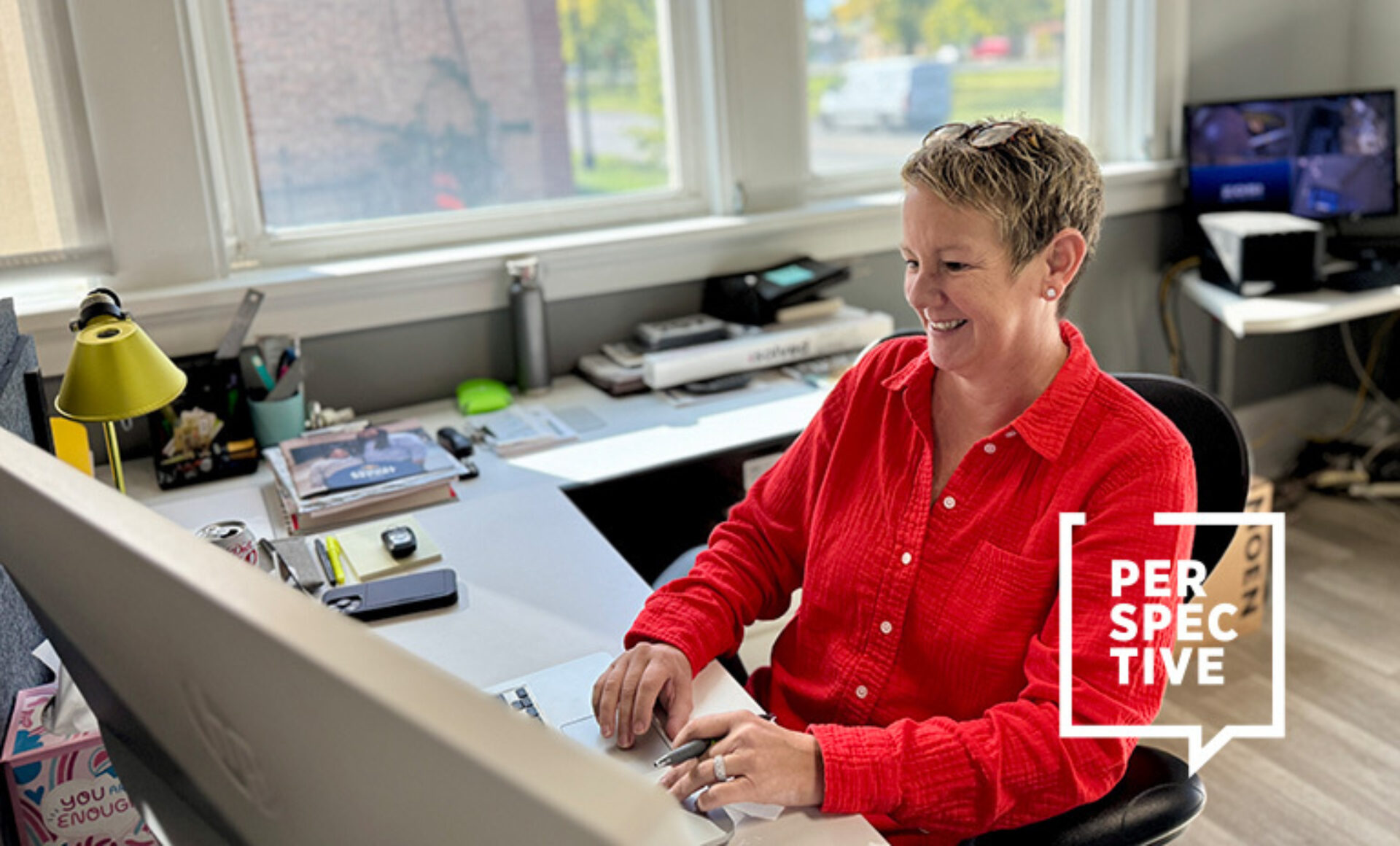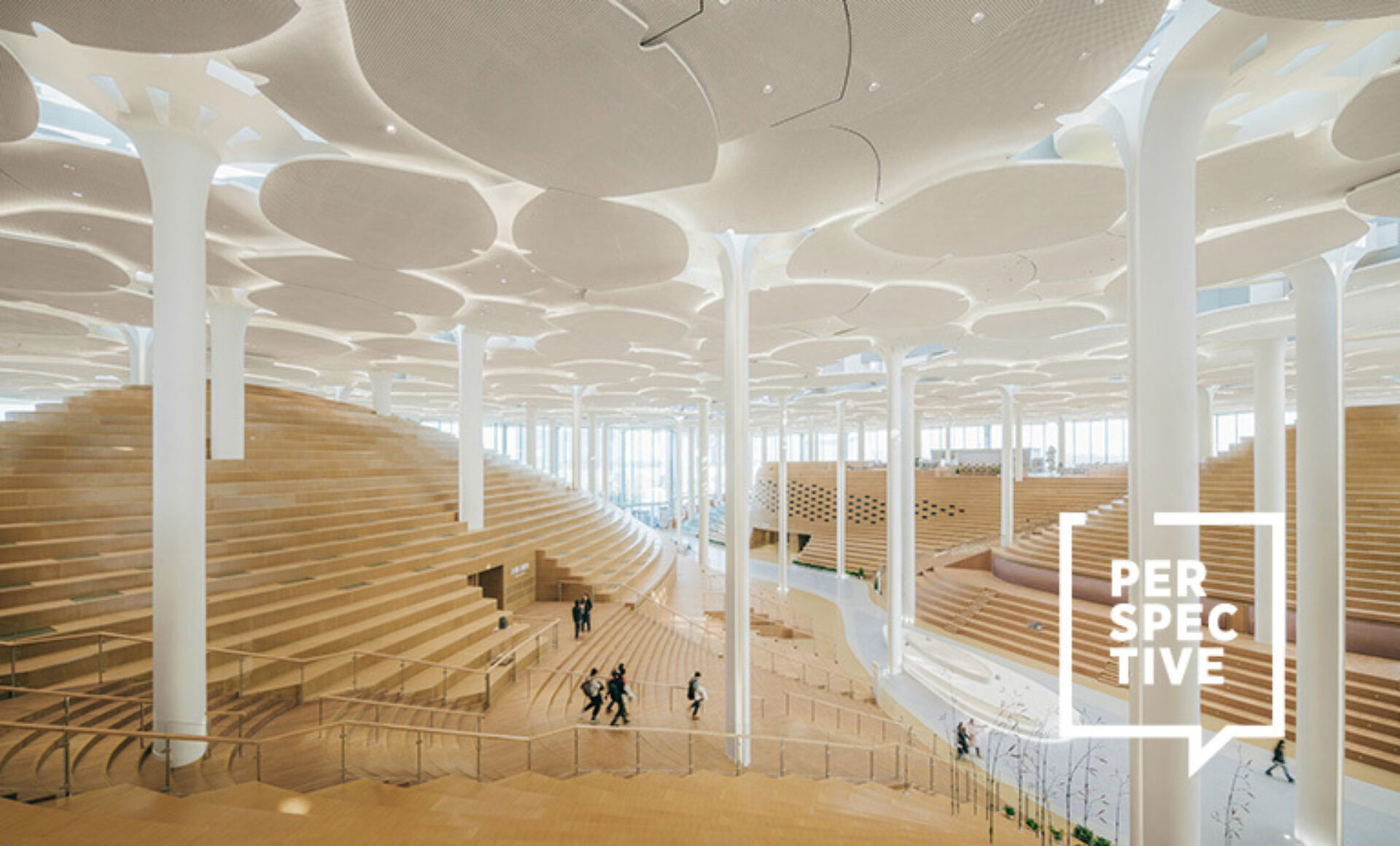One of the things that Tanner Woodford of the Design Museum of Chicago and Quilen Blackwell of Chicago Eco House and Southside Blooms have in common is using the power of design to change the world. They both believe in making design accessible for all, lowering the barriers of entry to the industry, and inspiring the next generation of creatives to become the best version of themselves. A step in that direction is Designing a Better Chicago, a collaborative initiative between NeoCon and theMART, the Chicago Department of Cultural Affairs and Special Events (DCASE), and the Design Museum of Chicago, aiming to shine a bright light on the city’s extraordinary design legacy—the local talent, assets, and community that have long supported civic good through design. Among them: Blackwell himself, who was the recipient of the 2022 Design Impact Grant Program for Chicago Eco House. Together with Woodford, they discuss the importance of paying attention to the equity gap, shedding light on the challenges of inner-city poverty and its effects, and working tirelessly to figure out ways to alleviate it. Find out more about their mission, their vision for building a better Chicago, and the ways they are hoping to contribute to change, beauty, and purpose in the world in this two-way conversation.
Tanner Woodford: Quilen, I'm so impressed by you and your work. Can you talk more about what you do and what's your guiding idea behind Southside Blooms, Chicago Eco House, and the whole shebang?
Quilen Blackwell: We got started back in 2014 with the mission of using sustainability to alleviate inner city poverty. We do that by taking over vacant lots and turning them into flower farms—we look at our work as kind of redesigning the economic base of the inner city and the Black community, and we look at the floral industry as a unique opportunity to drive wealth into that community. That’s a little bit about what we do. How about you, Tanner? Can you talk about your work at the Design Museum of Chicago?
TW: We're now 10 years old! At our headquarters in the Loop we put on three shows a year, we partner with Chicago Public Schools (CPS), and we do a lot outside of our gallery like pop-up exhibitions, murals, and public art. For one of our flagship projects, Designing a Better Chicago, we work with theMart and NeoCon to recognize and award grants to individuals or organizations in Chicago that are making the city better through design—it’s how we first met!

QB: So, if you could wave a magic wand and change Chicago, what's the picture you're trying to paint?
TW: Boy, if I had that magic wand I would be solving homelessness and doing a lot of things. At the Design Museum, I'd create projects and opportunities for people in different communities making sure that we're also doing that equitably. This brings to mind the visual arts exhibition we present every year in collaboration with CPS—last year we had something like 280 schools that participated. We are very mindful to represent different communities and students coming from different resource levels to celebrate and lift up their work. I would like to do more of that. How about you, Quilen?
QB: It seems like we have a lot of overlap. You go into schools, exposing kids to different careers within design. We're doing something similar, but more like workforce development. If I had that magic wand, every vacant lot in Chicago would be a beautiful flower farm. Teens that are being held in the Cook County jail would be gainfully employed on the farms or the shops, and every resident would be buying our flowers and supporting these young people. Our vision for Chicago is to add more color to the city. That's what I aspire to do.

TW: That's beautiful.
QB: Is there a specific project or program that really indicates who you are?
TW: We just opened an exhibition that collects 720 broken clocks, called "The Correct Time". It was initiated by Barbara Kennan in 1989 with the idea to have one clock for every minute of the day—it’s a beautiful collection. We also commissioned 24 new clocks for inclusion from different designers from Chicago and around the world. This program sums up who we are in that it provides a new, interactive way to experience museums. It's not only about collecting these priceless pieces of art and displaying them, but this exhibition is about you. If you've got a broken clock you can bring it to the opening and we'll put it on the wall. If you've got a thought about a particular time, you can write it on a sticker and you can contribute. It's an iterative show that's meant to change through participation. We want to make museums more accessible, and through that lens, design as well.
Another program with maybe an even bigger impact is a funded project through Illinois Humanities. We will work with the Juvenile Temporary Detention Center on a series of eight workshops bringing in designers, musicians, chefs, and improv leaders to work directly with small groups of youth over the course of four or five months, like a residence. We’re trying to expand their ideas of what their options can be when they are released from detention.


QB: I feel like people are perceiving design a little bit differently after experiencing the pandemic—it has reshuffled people's experiences and priorities when it comes to what's important and what's not. For example, design used to feel more high-end, Madison Avenue, elitist thing. But with the Design Museum it’s almost like designs coming down to earth. I see that commonality between what you're doing and what we're doing where people are a little more open to the “common man's” design.
TW: Design can be all of those things. I think there's still a need for high design, and in Chicago, we have for instance the Wright auction house, and Art Institute of Chicago which does canonical design collections exceptionally well, and I support that and I love it. But there's also the need for design to be “for the people.” This to me feels uniquely Chicago. Chicago is a working city with working designers that are solving problems and making the city, and the world, better through design. The Design Museum is a gallery that makes design accessible through representing accessible design.
QB: Tell me more about why Chicago is uniquely positioned for this.
TW: To me, it feels like in Chicago we’re very good at keeping our heads down, our nose to the grindstone, and keeping the work moving. There's such a rich culture here that creates this sort of tableau of working class designers. New York certainly has spirit and Los Angeles has working designers as well, but Chicago? Chicago is just different. Does it feel this way for you as well?


QB: Yeah. Actually, it wasn't until recently that I started to consider ourselves to be a part of the design community—I just didn't think of myself in that sense until we were invited to speak at NeoCon. But Chicago is pretty unique as a midwestern town with a big city flair. We do have a no-nonsense just-get-it-done Midwestern work ethic type of approach. And it’s not just design, but any kind of work—it's a little rough and tumble and sometimes that reveals some of the darker sides of our city. But people are really cool, warm, and welcoming—a lot of outsiders don’t see that. It's like family here. That's how I see Chicago.
I also think it can be a little bit easier to find a way to crack into the scene here, especially in the entrepreneurial community. There is a degree of openness to new ideas making it a little bit easier to find support here. I find fewer barriers to entry here in Chicago, you don’t always need to know someone to make an impact. For example, you had never heard of Southside Blooms until we applied, and we don't have a long-standing personal relationship. You just saw something that is different, a cool concept, and decided to give us a shot.
TW: You hit the nail on the head. I think lowering the barrier to entry is a common ground between what you and I do. We are lowering the barrier to entry by eliminating the cost of admission, and by taking our work and putting it in communities, meeting people where they are rather than making them come to us. And you are lowering barriers to entry by creating this workforce development program, giving students a leg up, and by making flowers more accessible in your community, which just makes life more beautiful. I think that's an interesting commonality between our work which may not look that similar on the surface.
I'm curious how you see design, as someone who doesn’t consider themselves a designer. How do you define it, especially in terms of the Chicago Eco House?
QB: Our role is basically being a catalyst to help people see themselves as designers, to flourish, to help our youth look at themselves as artists, or simply as artistic people. To provide an outlet. I look at our role as opening up a door, so that people who do look at themselves as designers can come in, show off their skills, and flourish. Reducing the barrier of entry to creativity as much as possible so that non-traditional designers can have their voice heard and their work seen.
In June we partnered our youth florists with fashion design students from Columbia College for a floral fashion show. Together they made really cool street fashion with flowers incorporated, giving them a platform to show off their creativity. Maybe they've birthed a new category: street flower fashion! I think it is really cool to see people who don’t normally have access to certain spaces get an opportunity to showcase their talents. The whole world could benefit from one new idea if it can be seen.
TW: I love that you value lessons learned through both successful and unsuccessful projects. It inspires me that you just keep trying new things to see what sticks, it's such an intuitive and exciting process that you're going through. I think design is really woven throughout the business, even if it's unintentional. You create a place that encourages the future generation to build on and to learn from it.

QB: How do you look at the future of design, Tanner? What kind of trends do you see that are going to maybe shape the design field over the next 5-10 years?
TW: One thing that I've observed about the current generation is their collaborative spirit and holistic process.I think that's really exciting, because when we take this design solution approach to big problems, it can certainly impact high art and fine design, but also climate change, homelessness, and the real issues that are tearing the world apart.
QB: It’s very inspirational! How can design solve real world problems, be more relevant to the world we live in, and the world we want to live in? The current generation are invested in social and environmental issues, there's an awareness and urgency that previous generations didn't have. No matter whether you're an engineer, an architect, a fashion designer, or a farmer, we should all want to leave the world in better shape than we found it. It’s people like you and me who are trying to get the ball rolling in that direction in hopes that the next generation will then take that ball and move it up a million notches. It's a lot of trial and error, and it’s a little messy, but I'm hoping clarity will come over the next several years as some of the best ideas become common practice and elevate the entire field of design.
TW: It's interesting to think about how people are building on what came before them— we're all standing on the shoulders of the people that came before us. It sure feels like every generation is getting tougher and will need to be tougher to solve these big problems, and I'm excited to see it evolve.

QB: You also teach at the School of the Art Institute of Chicago, how do you see the impact of global influence in the classroom with your students?
TW: My role is to never just be the expert in the room, but to always empower students. The process of discovery and learning while answering a question or problem provides a framework for solutions for those problems. I always have an open-ended thesis where we state the problem, perform research to find a solution for that problem, and develop goals, timelines, and phases. One student project started with looking at climate change, and ended up with changing all of the printers school-wide to print double-sided by default, saving paper. From there, one can take it further.
Chicago Eco House and Southside Blooms actually feel like a classroom. How do you give students the tools that they need to learn and grow and ultimately change their lives?
QB: It's definitely more hands-on learning. We’re physically training them in hard and soft skills—from plant identification to how to make a bouquet right using different designs and techniques. Most kids we work with come from high trauma backgrounds or broken homes. We need to teach a lot of things, like conflict resolution, how to work in a team environment, or how to take feedback constructively from a supervisor. Our classroom is the real world. We're dealing with a lot of kids who are coming from gangs, or have relatives who were in a gang so, you know, it gets very real very quickly here. We're trying to work with de-escalation and talking through feelings. It's literally a living and breathing classroom.
Our kids understand limitations, they understand risks and pitfalls, and they understand opportunity. That part is really cool because you can see a hunger to get better—of wanting more knowledge. It's not a linear path. We have days where a kid takes one step forward and two steps back, and there are times I wish it was less chaotic, but it’s a process through which you learn more about the nuances of life. It really brings the best out of people and it brings the best out of me.


TW: How do you keep the kids inspired, and how do you keep yourself inspired?
QB: I love seeing the growth, that's what gets me excited. When I see a young kid who has gone down the wrong path get an opportunity and start making better decisions, it's just a reminder that everybody has a purpose, everybody has value. How about you? What about the design museum keeps your fire going?
TW: I'm really inspired by the breadth of design. I think that we do have room for high art and fine design inside the Design Museum of Chicago, and we also have room for a really cool collection of broken clocks and everything in between. I get really excited to put together a story that people react to, whether that's through a workshop at the Juvenile Temporary Detention Center or through an exhibition in our gallery. To me, it’s important to tell a more inclusive story and intentionally go into communities that haven't been part of that story.
